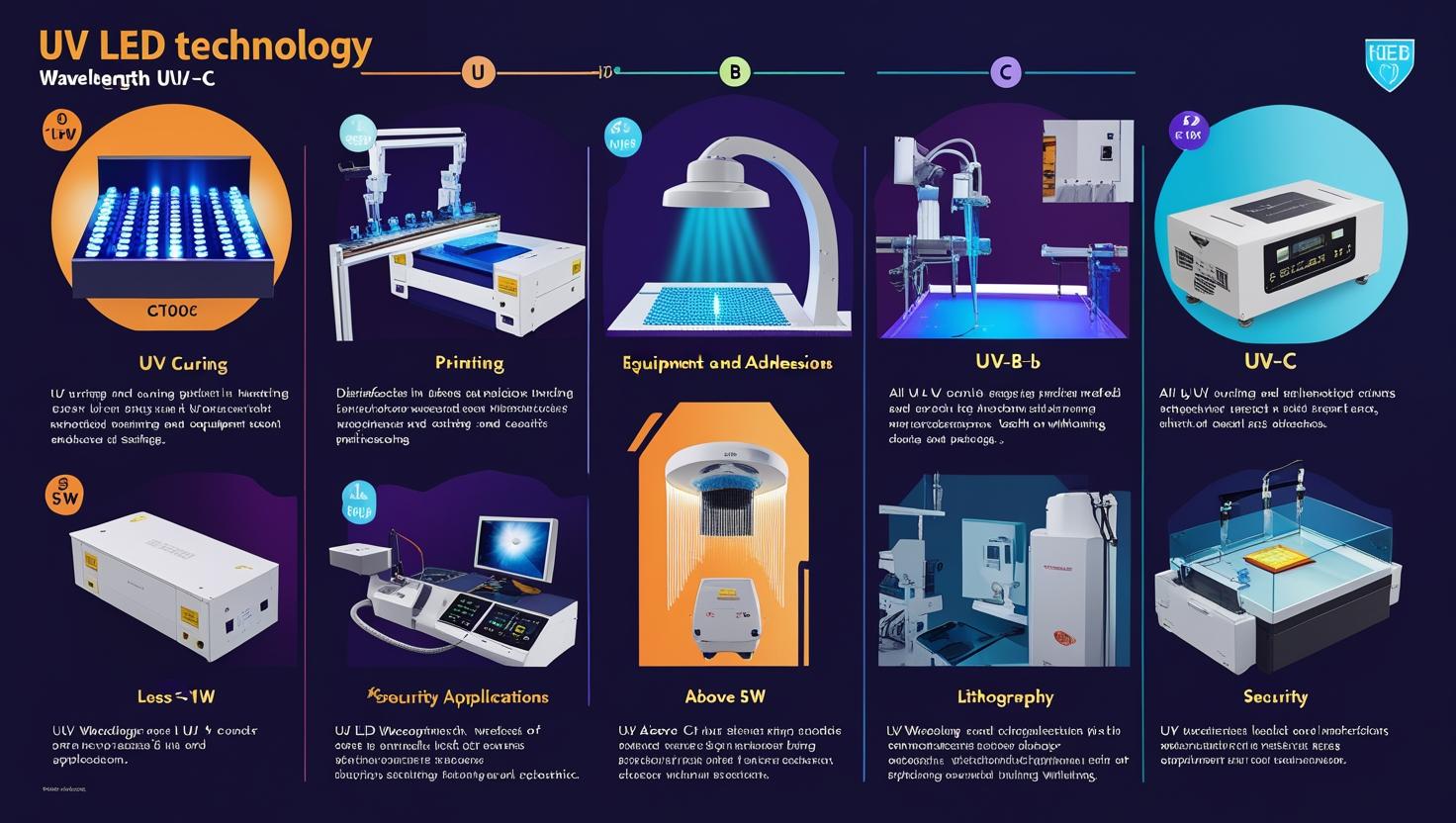In an era where hygiene and infection control have become paramount, especially in healthcare, food processing, and public spaces, surface sterilization technologies are under the spotlight. Among the various methods available, UV LED technology has emerged as a powerful and innovative solution for effective surface sterilization. Unlike traditional ultraviolet (UV) lamps, UV LEDs offer unique advantages that make them increasingly popular across industries.
This article explores the key benefits of UV LED technology in surface sterilization and why it’s poised to become a leading choice in combating pathogens on surfaces.
What Is UV LED Technology?
UV LEDs are semiconductor light sources that emit ultraviolet light when an electric current passes through them. Operating primarily in the UV-C spectrum (wavelengths between 200-280 nm), which is effective in inactivating bacteria, viruses, and other microorganisms, UV LEDs offer a compact, energy-efficient, and environmentally friendly alternative to mercury-based UV lamps.
The UV LED market is expected to be valued at USD 1.23 billion in 2025 and is projected to reach USD 2.16 billion by 2030, registering a CAGR of 11.9% during the forecast period
1. Rapid and Effective Sterilization
UV-C light is well-known for its germicidal properties, capable of destroying the DNA and RNA of bacteria, viruses, and fungi, rendering them unable to reproduce or cause infection. UV LEDs deliver focused UV-C radiation, allowing for quick and targeted sterilization of surfaces such as medical instruments, food preparation areas, electronic devices, and public touchpoints.
Unlike chemical disinfectants, UV LED sterilization is residue-free and doesn’t involve harmful substances, making it safe for frequent use.
2. Energy Efficiency and Longevity
UV LEDs consume significantly less power than traditional mercury UV lamps, making them a more energy-efficient solution. Their longevity also surpasses conventional lamps; UV LEDs can last tens of thousands of hours without degradation in performance. This means reduced maintenance costs and less frequent replacements, which is ideal for continuous or repeated sterilization tasks.
3. Compact and Versatile Design
Due to their small size, UV LEDs can be integrated into a variety of devices and applications where traditional bulky UV lamps would be impractical. This versatility enables innovations like handheld sterilization wands, embedded sterilizers in consumer electronics, or conveyor belt sterilization systems in food packaging lines. The compact nature also facilitates sterilization in hard-to-reach areas and on irregular surfaces.
Download PDF Brochure @ https://www.marketsandmarkets.com/pdfdownloadNew.asp?id=143107738

4. Instant On/Off Operation
UV LEDs reach full intensity almost immediately when powered on, unlike mercury lamps that require warm-up time. This instant on/off capability allows for more precise control over sterilization cycles and enhances energy savings, as devices can be turned off when not in use without waiting for cooldown periods.
5. Environmentally Friendly and Safe
Traditional UV lamps often contain mercury, a toxic heavy metal that poses disposal and environmental risks. UV LEDs are mercury-free and have a smaller environmental footprint. They also produce less heat and no ozone, reducing the risk of secondary contamination or damage to sensitive surfaces.
6. Improved Safety Features
Because UV LEDs can be precisely controlled and directed, the risk of unintended UV exposure is lower compared to traditional UV lamps that emit in multiple directions. This enhances operator and user safety, especially in public spaces and healthcare environments where human exposure must be minimized.
7. Adaptability Across Industries
UV LED surface sterilization is not limited to one sector. It finds applications in healthcare (sterilizing surgical instruments and patient rooms), food processing (eliminating pathogens on packaging and surfaces), transportation (sanitizing public touchpoints like seats and handles), and electronics (sterilizing device surfaces without moisture damage).
This cross-industry adaptability underscores the technology’s flexibility and growing market demand.
UV LED technology is revolutionizing the way surface sterilization is performed, offering a cleaner, faster, safer, and more energy-efficient alternative to conventional methods. Its compact size, durability, and environmentally friendly nature make it a future-ready technology for maintaining hygiene standards in diverse settings.
As global focus on infection control intensifies, the adoption of UV LED sterilization systems is expected to surge, driving innovation and improving public health outcomes across the board.
FAQs: UV LED Technology in Surface Sterilization
1. What is UV LED technology?
UV LED technology uses light-emitting diodes that emit ultraviolet (UV) light, especially in the UV-C spectrum, which is effective in killing or inactivating microorganisms like bacteria, viruses, and fungi on surfaces.
2. How does UV LED sterilization work on surfaces?
UV-C light from UV LEDs damages the DNA or RNA of pathogens on surfaces, preventing them from replicating and causing infection. This process effectively sterilizes the treated area without chemicals.
3. What are the advantages of UV LEDs over traditional UV lamps?
UV LEDs are more energy-efficient, have a longer lifespan, are mercury-free (environmentally safer), compact in size, provide instant on/off operation, and can be integrated into a variety of devices for versatile sterilization.
4. Are UV LEDs safe for use around humans?
When used properly and with safety measures, UV LEDs can be safe. Direct exposure to UV-C light can be harmful to skin and eyes, so devices often include shielding or operate in unoccupied spaces to minimize risk.
5. In which industries is UV LED surface sterilization commonly used?
UV LED sterilization is widely used in healthcare (e.g., hospitals, clinics), food processing, electronics manufacturing, public transportation, hospitality, and consumer electronics.
